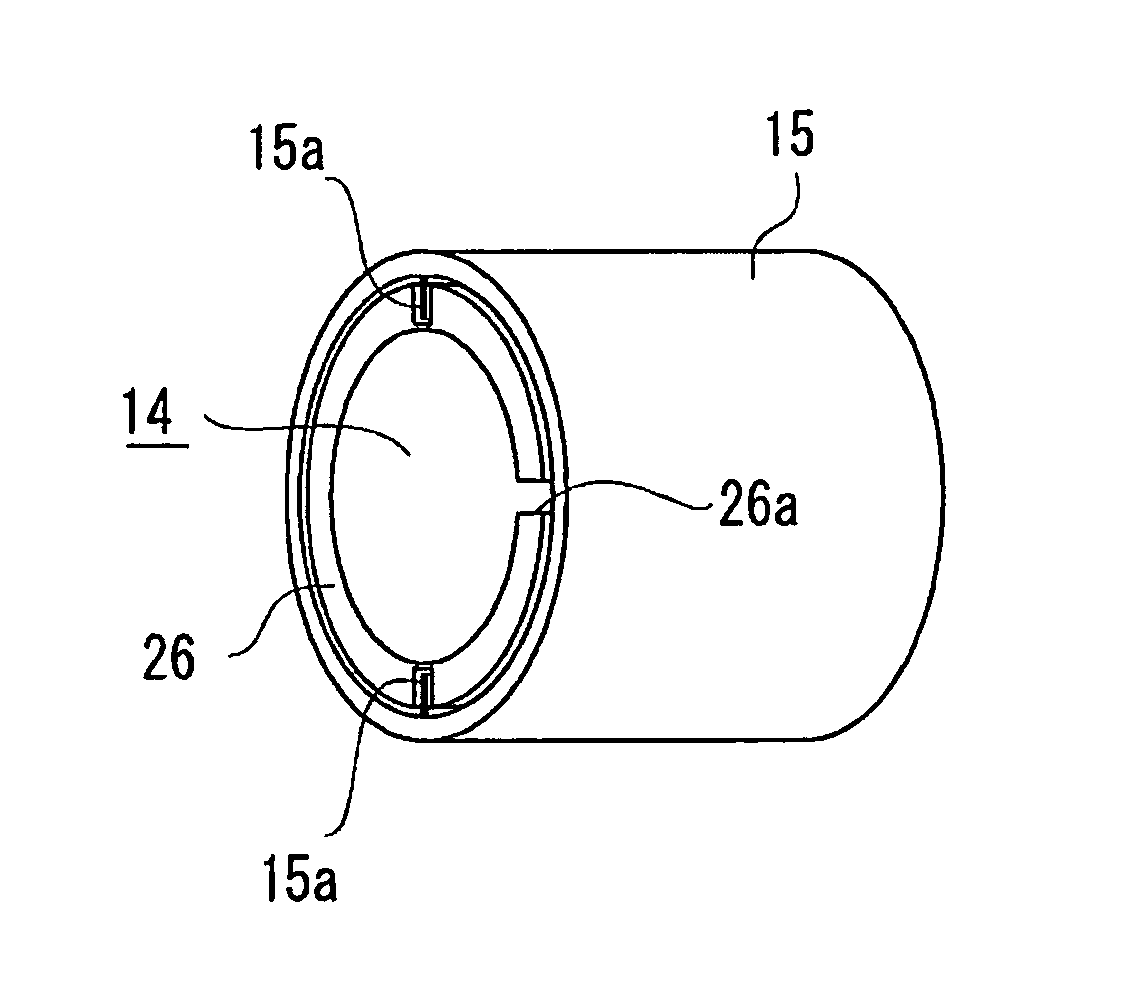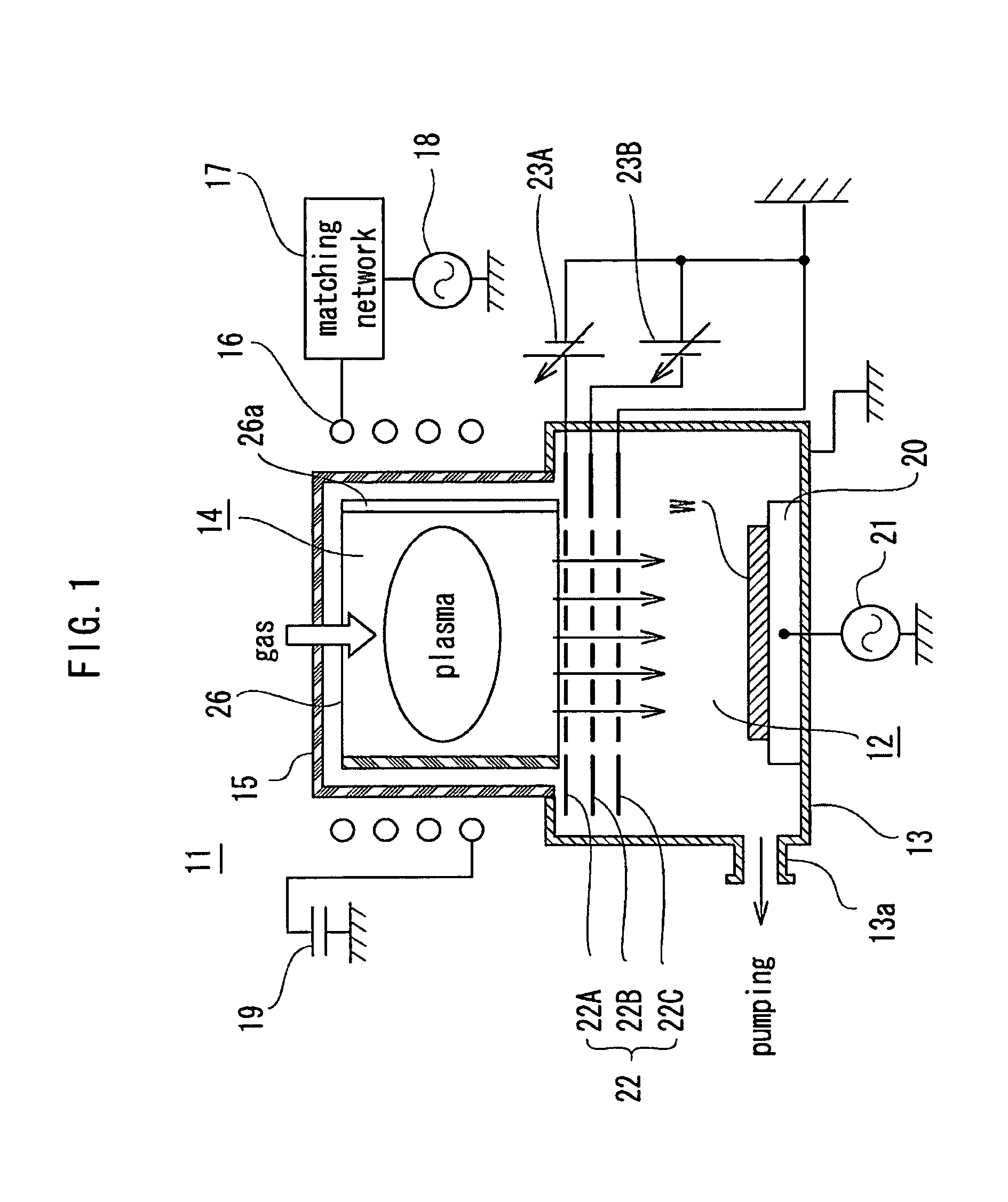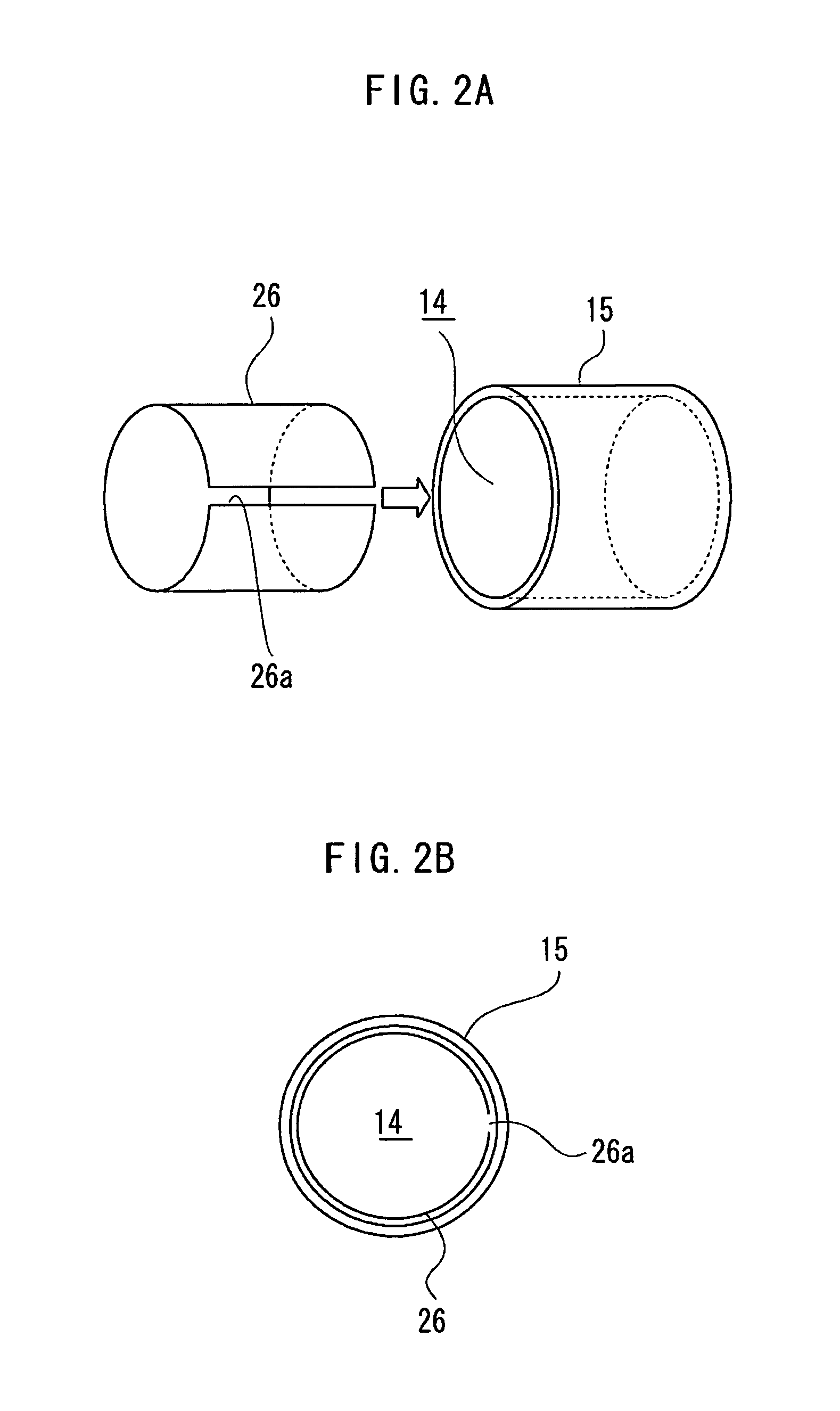Ion source and plasma processing apparatus
a plasma processing apparatus and inductive coupling technology, applied in the direction of plasma technique, vacuum evaporation coating, coating, etc., can solve the problems of increased dielectric loss, increased dielectric loss, difficulty in stable formation or maintenance of plasma, etc., and achieve the effect of reducing the dielectric loss between the high-frequency antenna and the plasma generating chamber and stably forming
- Summary
- Abstract
- Description
- Claims
- Application Information
AI Technical Summary
Benefits of technology
Problems solved by technology
Method used
Image
Examples
first embodiment
[0061]FIG. 1 is a schematic view of a plasma processing apparatus 11 having an ion source according to a first embodiment of this invention. The plasma processing apparatus 11 of this embodiment includes a vacuum chamber 13 containing a processing chamber 12. The processing chamber 12 accommodates a substrate to be processed (hereinafter, simply referred to as “substrate”) W such as a semiconductor wafer or a substrate for a liquid crystal panel. The vacuum chamber 13 has an evacuation pipe 13a communicating with vacuum evacuation means (not shown) such as vacuum pumps. Therefore, the inside of the processing chamber 12 can be depressurized to a predetermined vacuum level.
[0062]A partition wall 15 is installed at the upper portion of the vacuum chamber 13. The partition wall 15 partitions a plasma generating chamber communicated with the processing chamber 12. The partition wall 15 is made of a dielectric material such as quartz (a quartz bell jar?). A high-frequency antenna 16 woun...
second embodiment
[0083]Then subsequently, FIGS. 5 and 6 show other embodiments of “the structure” pertaining to this invention. Parts that correspond to those in the above first embodiment are denoted by the same reference numerals. Therefore the detailed description of these parts will be omitted.
[0084]In the embodiment shown in FIGS. 5A and 5B, projections 15a extended in the direction crossing the winding direction of the high-frequency antenna 16 (FIG. 1) are provided. The projections 15a are formed on the inner peripheral surface of the cylindrical partition wall 15 partitioning the plasma generating chamber 14. According to this construction, sputtered materials are prevented from depositing onto the inner surface of the partition wall 15 in series in the peripheral direction thereof by the projections 15a. Therefore, the dielectric loss of the high-frequency antenna 16 can be reduced.
[0085]When the sputtered materials adhere onto both sides of the projection 15a, a direction of the current fl...
third embodiment
[0093]FIGS. 7 and 8 show a third embodiment of this invention. Parts that correspond to those in the above first and second embodiments are denoted by the same reference numerals. The detailed description of these parts will be omitted.
[0094]In this embodiment, a structure is provided in which the shield body 26 described in the first embodiment and the inner surface structure of the partition wall 15 described in the second embodiment are combined.
[0095]In the embodiment shown in FIGS. 7A and 7B, the recesses 15b are formed on the inner peripheral surface of the cylindrical partition wall 15 partitioning the plasma generating chamber 14. The recesses 15b are extended in the direction crossing the winding direction of the high-frequency antenna 16 (FIG. 1). Further, the shield body 26 is made of a dielectric material and is installed inside the partition wall 15. The slot 26a is formed at the shield body 26 in the direction crossing the winding direction of the high-frequency antenn...
PUM
| Property | Measurement | Unit |
|---|---|---|
| frequency | aaaaa | aaaaa |
| gas pressure | aaaaa | aaaaa |
| width | aaaaa | aaaaa |
Abstract
Description
Claims
Application Information
 Login to View More
Login to View More - R&D
- Intellectual Property
- Life Sciences
- Materials
- Tech Scout
- Unparalleled Data Quality
- Higher Quality Content
- 60% Fewer Hallucinations
Browse by: Latest US Patents, China's latest patents, Technical Efficacy Thesaurus, Application Domain, Technology Topic, Popular Technical Reports.
© 2025 PatSnap. All rights reserved.Legal|Privacy policy|Modern Slavery Act Transparency Statement|Sitemap|About US| Contact US: help@patsnap.com



